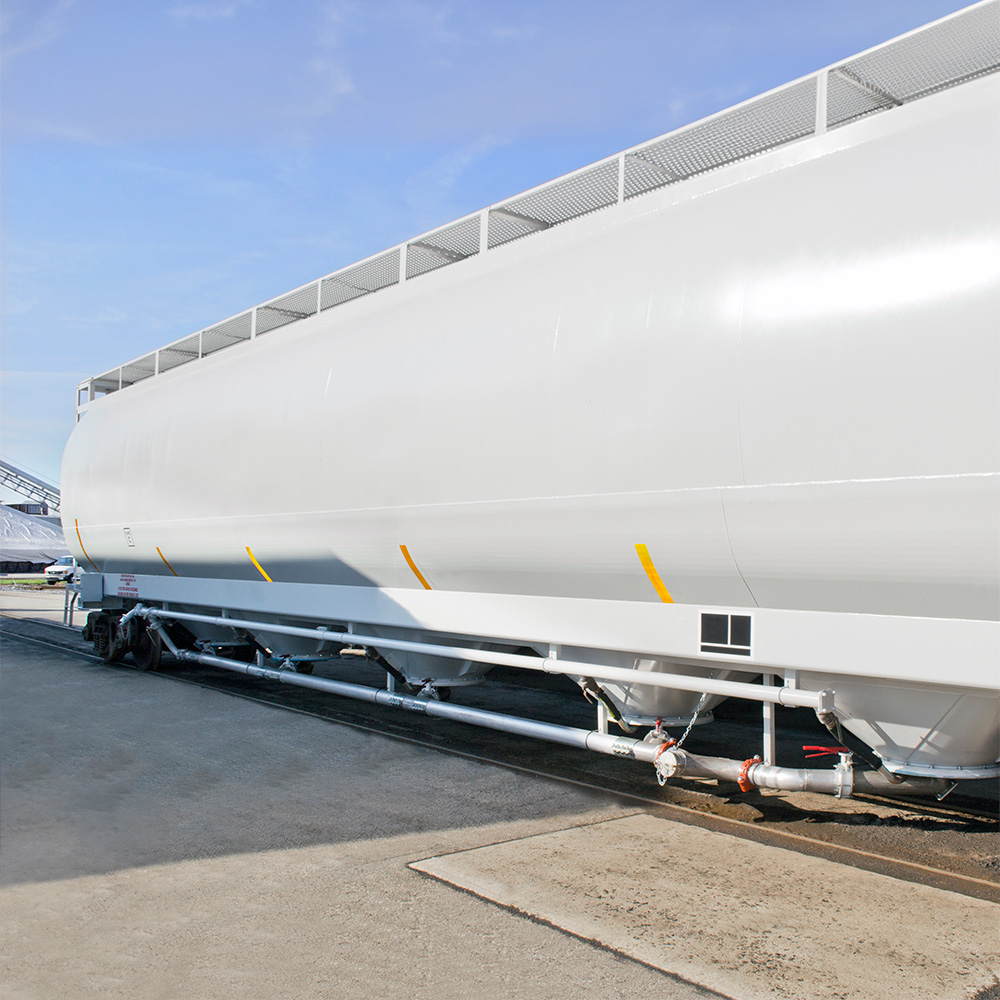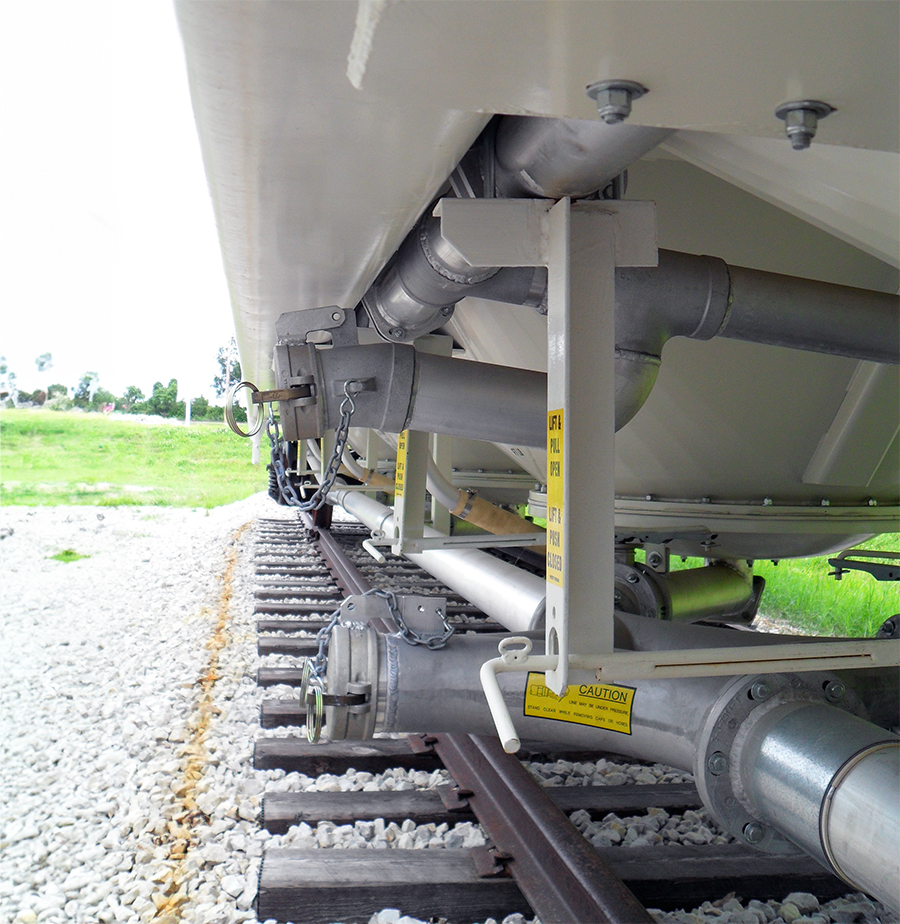Harnessing Air: Unveiling the Ingenious Unloading Techniques of Air Slide and Pressure Differential Hopper Cars
 In the freight rail industry, hopper cars are ubiquitous in the transport of a diverse array of dry bulk materials. These differ in both form and function, each designed to deal with various physical properties of the materials they will be carrying. Two common examples of these differences are seen in cars referred to “air slide” and “pressure differential” type hopper cars. And wouldn’t you know it, Salco Products just happens to be the manufacturer of a variety of top-quality AAR approved parts and accessories specifically for these two car types. So let’s briefly explore these work horses of the rails.
In the freight rail industry, hopper cars are ubiquitous in the transport of a diverse array of dry bulk materials. These differ in both form and function, each designed to deal with various physical properties of the materials they will be carrying. Two common examples of these differences are seen in cars referred to “air slide” and “pressure differential” type hopper cars. And wouldn’t you know it, Salco Products just happens to be the manufacturer of a variety of top-quality AAR approved parts and accessories specifically for these two car types. So let’s briefly explore these work horses of the rails.As is the case with many things, loading the cargo up on top is pretty straightforward. But when it comes time to push that cargo out the bottom end, things can get a little more complicated. If it comes out too fast in an uncontrolled manner, some unfortunate soul is going to have a terrible mess to clean up. On the other hand, dense material comes out slowly, or sometimes not at all.
The aforementioned air slide and pressure differential type hopper cars both address these bottom-side unloading issues in different ways and are used for different materials. Without getting bogged down in the minutiae of fluid dynamics, here is a brief overview of how air is used to unload each car type.
Air Slide Hopper Cars: Fluidizing Bulk Materials
Air slide hopper cars utilize a combination of gravity and fluidization to unload bulk materials. The interior of these cars features a sloping floor lined with a porous, air-permeable fabric. Compressed air is introduced through this fabric, causing the material to fluidize, or behave like a fluid, and flow more easily. This air-assisted movement facilitates the discharge of the material from the rail car through outlets at the bottom.
This type of car is used mainly to transport fine-grained, powdered, or granular materials that are prone to compaction, clumping, or sticking, air slide hopper cars ensure that these materials flow smoothly during the unloading process. Common materials transported using air slide hopper cars include cement, fly ash, flour, alumina, and gypsum.
Pressure Differential Hopper Cars: Air Pressure Wins Again
 In contrast, pressure differential hopper cars employ pressure differences to push bulk materials out of the car. This pressure differential is generated between the interior and exterior of the car, using either vacuum or air pressure. This force drives the material through outlets at the bottom of the rail car, making the unloading process generally faster and more efficient than other methods. These hopper cars often feature rounded, enclosed interiors and are tightly sealed to minimize product contamination and loss.
In contrast, pressure differential hopper cars employ pressure differences to push bulk materials out of the car. This pressure differential is generated between the interior and exterior of the car, using either vacuum or air pressure. This force drives the material through outlets at the bottom of the rail car, making the unloading process generally faster and more efficient than other methods. These hopper cars often feature rounded, enclosed interiors and are tightly sealed to minimize product contamination and loss.Best suited for materials that are not sensitive to compaction or clumping, pressure differential hopper cars offer a faster and more efficient unloading process, especially for large quantities of material. Commonly transported materials using pressure differential hopper cars include plastic resin pellets, grain, coal, sand, and gravel.
Salco Products offers a complete line of accessories and parts for both types of hopper cars, for loading and unloading, safety and compliance. Find what you need now!

